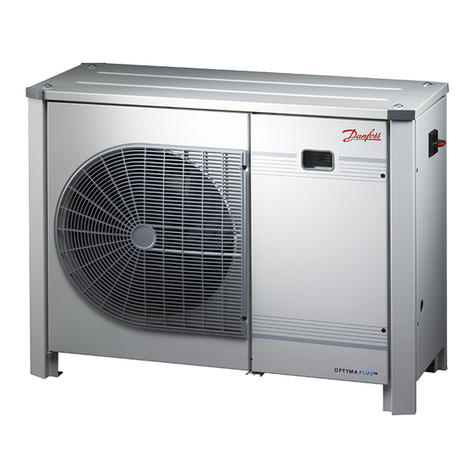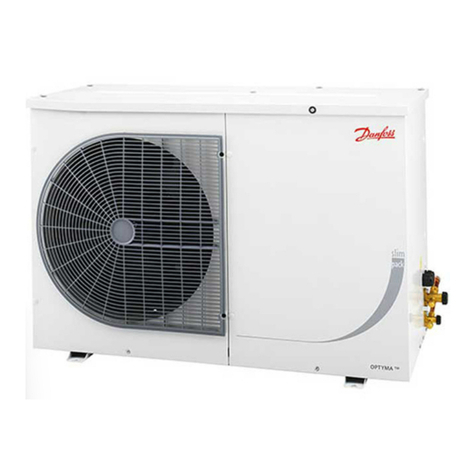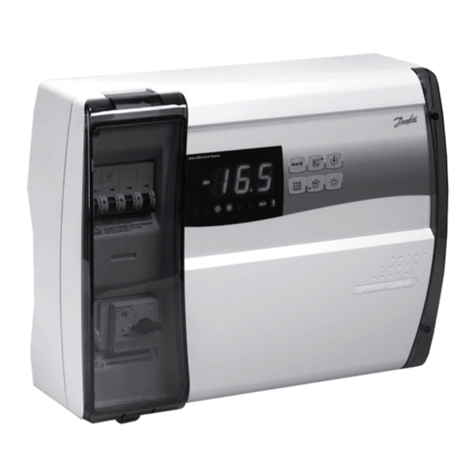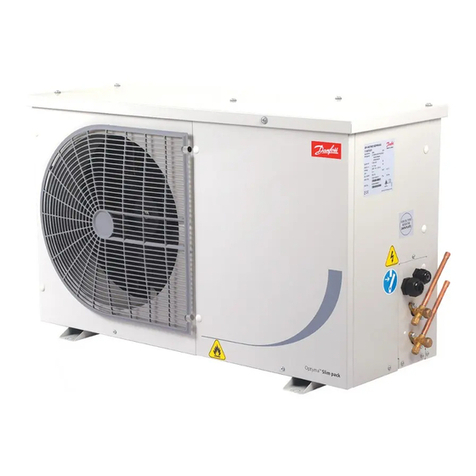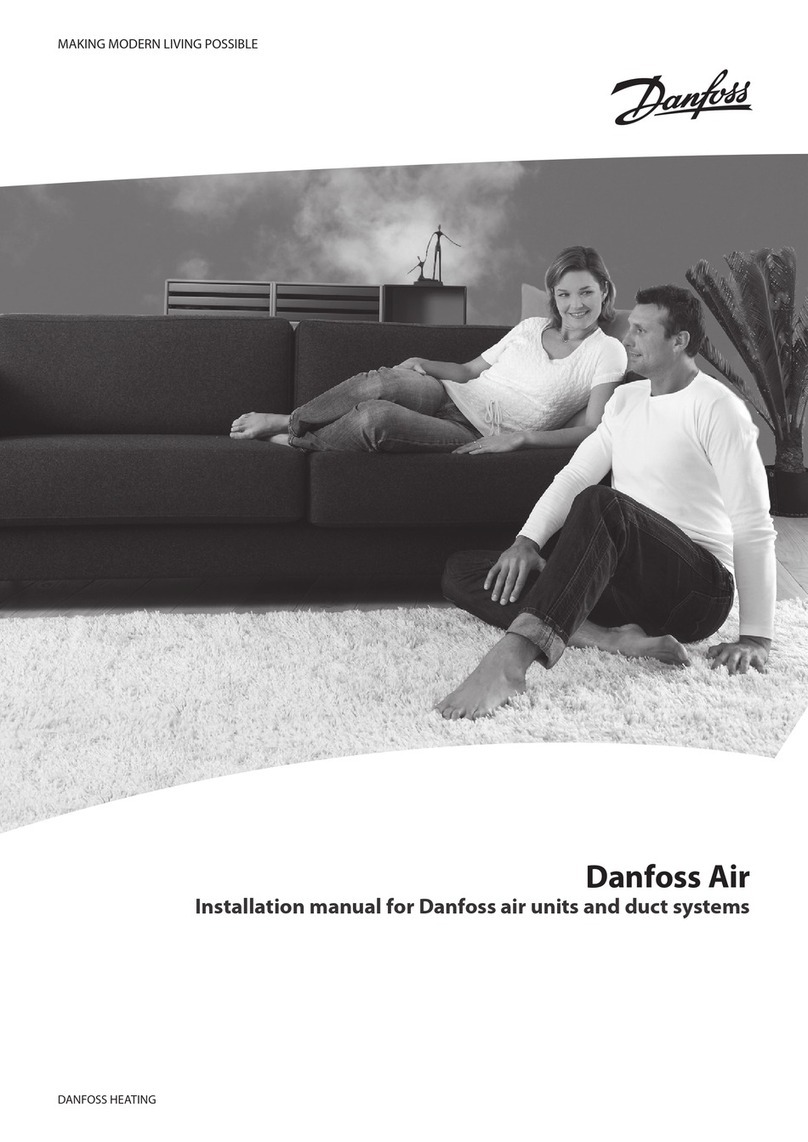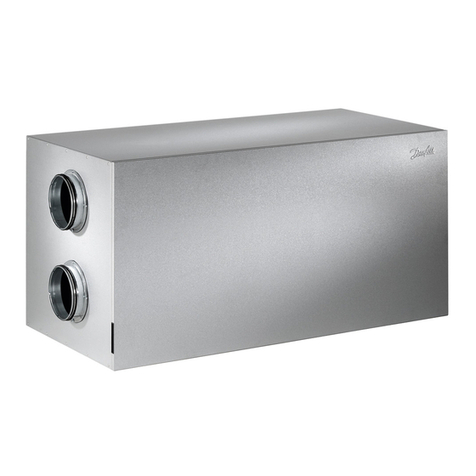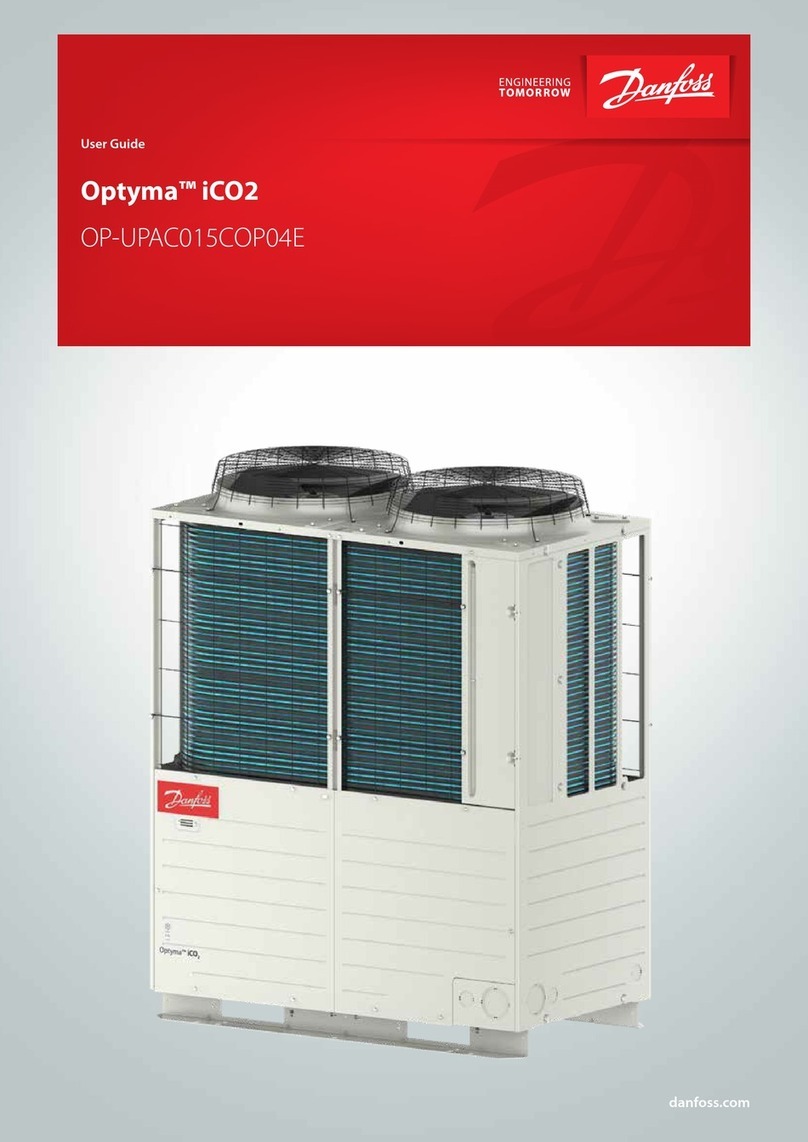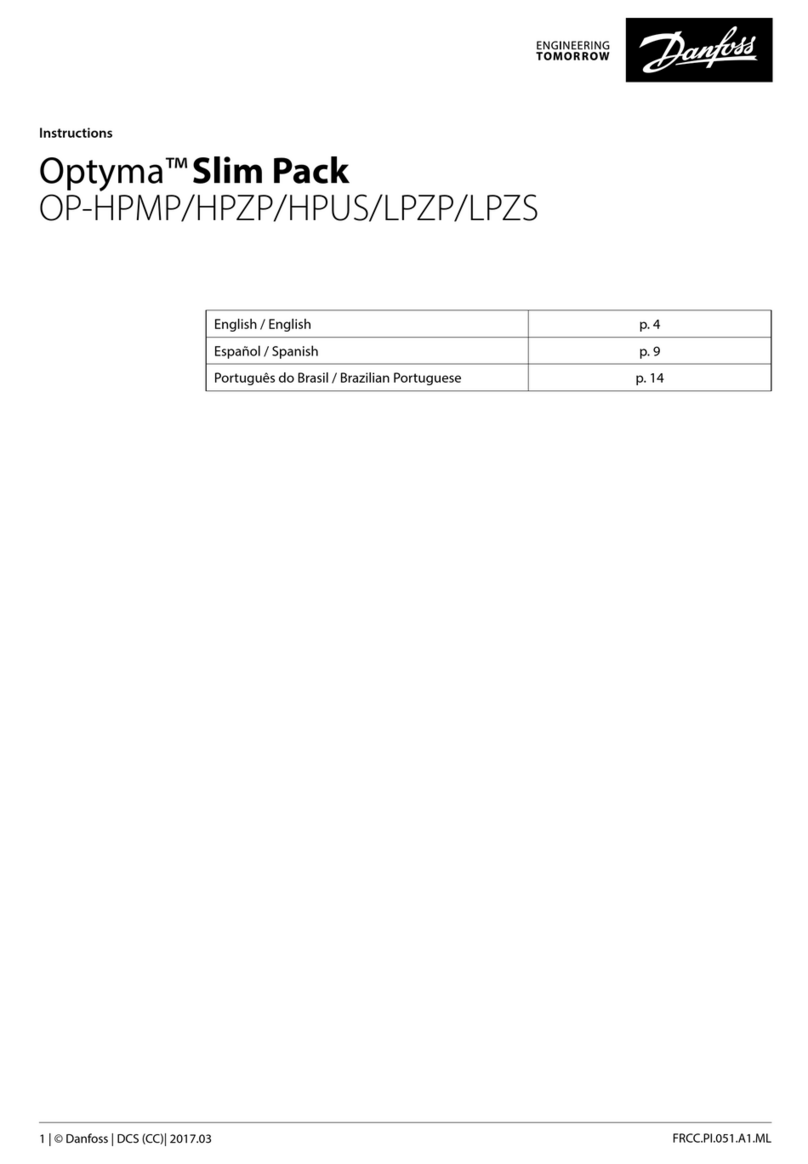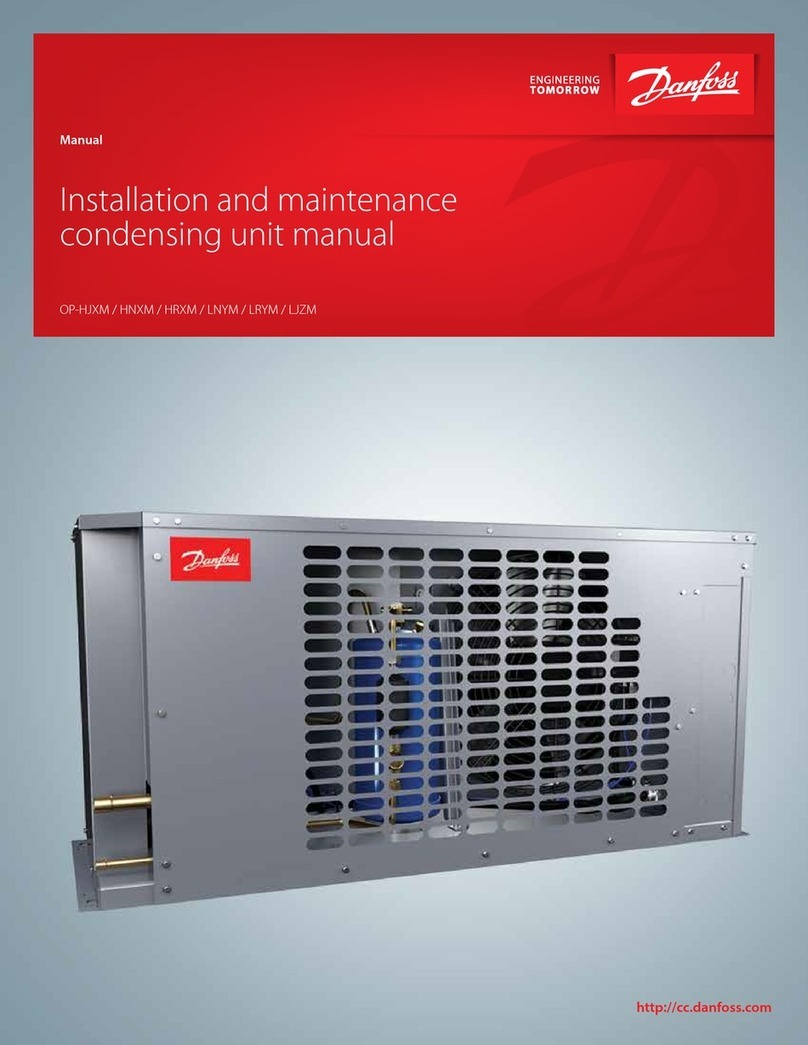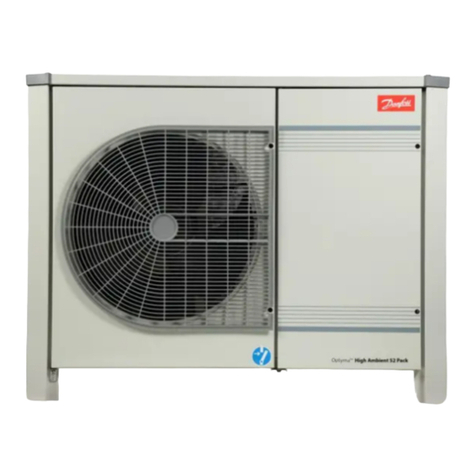5. Coating Coating of a heat exchanger could increase
corrosion resistance in certain applications and/
or environmental conditions such as coastal or
industrial areas, as well as situations with
stagnant water or extreme wet conditions.
Danfoss approved coating systems provide a
controlled process for the cleaning, rinsing, and
the application of the coating material with full
and even coverage. Untested coating systems
may not adhere properly to the aluminum
surface due to the flux residue left on the
aluminum surface after brazing. In addition, any
small area not covered by the coating could
potentially pose a risk of failure due to corrosion.
Thermal performance may also be reduced by
improper application of the coating resulting in
clogging or bridging between the fin and louvers
WARNINGS
Field applied coatings are not recommended for
brazed aluminum MicroChannel heat exchang-
ers.Danfoss MicroChannel heat exchangers must
NOT be coated using any other coating, but the
ones specifically approved by Danfoss, such as
certain qualified e-coating (epoxy based
electrophoretic coating) suppliers or similar
high-quality coating technologies. Coating of a
coil using a supplier or coating process not
approved by Danfoss voids the product warranty.
It may also reduce the lifetime and/or the
performance of the MicroChannel heat
exchanger. Consult your Danfoss Sales &
Application representative for more information.
6. Maintenance Frequent servicing is essential to maintaining
the required MCHE performance. For every
installed Danfoss MCHE, service records must be
documented.
CAUTION
Prior to servicing the MCHE, be sure to discon-
nect the power supply and use lock-out
methods to prevent the power from acciden-
tally being turned on.
6.1 Filters
Danfoss recommends the use of air filters on the
frontal face of the MCHE to lower the deposition
of rain water and other contaminants that can
collect on the surface of the tubes.
6.2 Shut down periods
During periods when the MCHE is not operated
for longer than a week, the MCHE must be
completely cleaned following the cleaning
procedure. This practice must also be performed
during short shut-down periods where corrosive
deposits accumulate on the MCHE.
6.3 Cleaning procedure
Relative to tube & fin heat exchangers, Micro-
Channel heat exchanger coils tend to accumu-
late more dirt on the surface of the coil and less
dirt inside the coil, making them easier to clean.
Follow the steps below for proper cleaning:
Step 1: Remove surface debris
Remove surface dirt, leaves, fibers, etc. with a
vacuum cleaner (preferably with a brush or other
soft attachment rather than a metal tube),
compressed air blown from the inside out, and/or
a soft bristle (not wire!) brush. Do not impact or
scrape the coil with the vacuum tube, air nozzle,
etc.
Step 2: Rinse
Rinse only with water. Do not use any chemicals
(including those advertised as coil cleaners) to
clean MicroChannel heat exchangers, as they
may cause corrosion.
Hose the MCHE off gently, preferably from the
inside-out and top to bottom, running the water
through every fin passage until it comes out
clean. The fins of MicroChannel coils are stronger
than traditional tube & fin coil fins but still need
to be handled with care. Do not hit the coil with
the hose. We recommend placing your thumb
over the end of the hose rather than using the
end of the nozzle to obtain a gentler spray and
reduce the possibility of impact damage.
We do not recommend using a pressure washer
to clean the coil due to the possibility of damage.
Warranty claims related to cleaning damage,
especially from pressure washers, or corrosion
resulting from chemical coil cleaners, will NOT be
honored.
Step 3: Blow dry
Depending on the installation and fin geometry,
MicroChannel heat exchangers could possibly
retain more water compared to traditional tube &
fin coils. It is advised to blow off or vacuum out
the residual water from the coil to speed up
drying and prevent pooling.
Danfoss recommends a quarterly cleaning of the
coils, as the minimum. The cleaning frequency
should be increased depending on the level of
dirt/dust accumulation and the environment
(e.g., coastal areas with chlorides and salts) or
industrial areas with aggressive substances.
